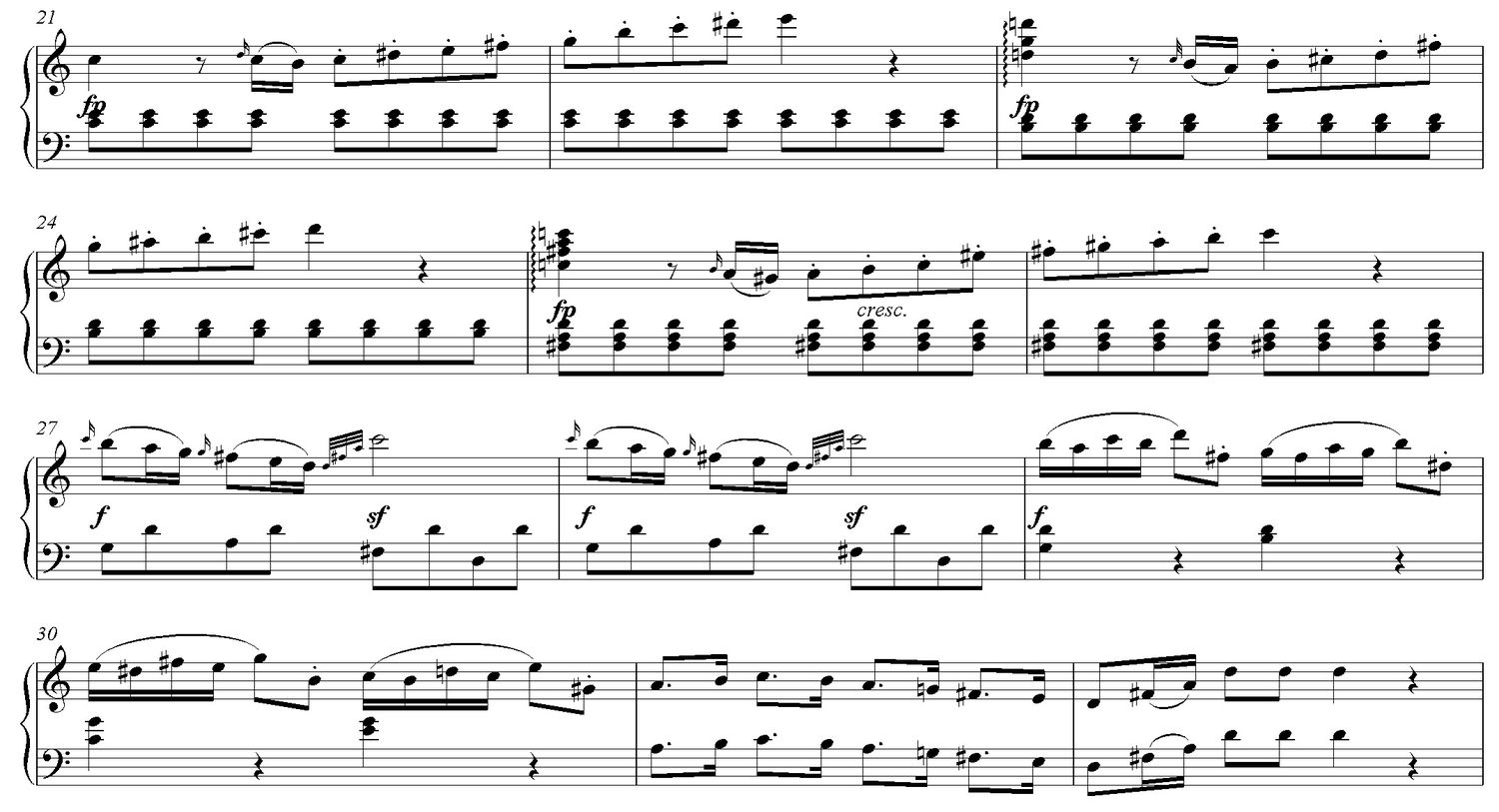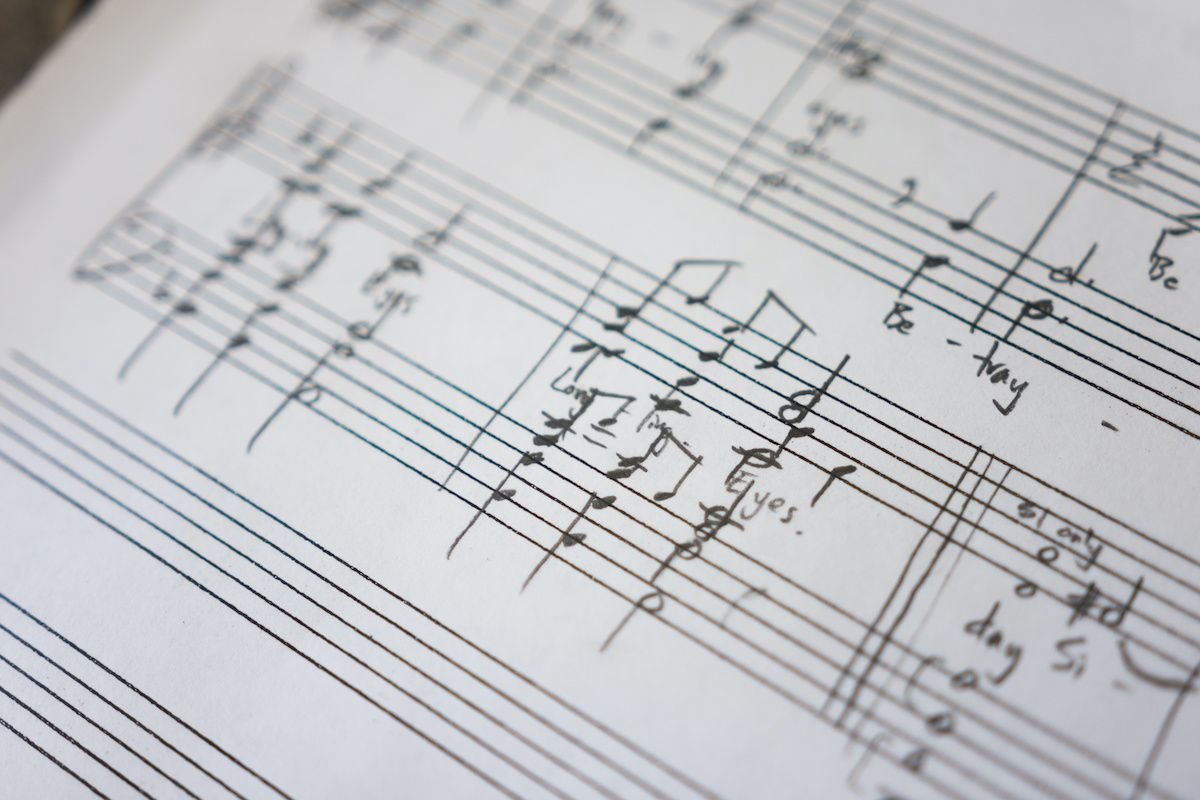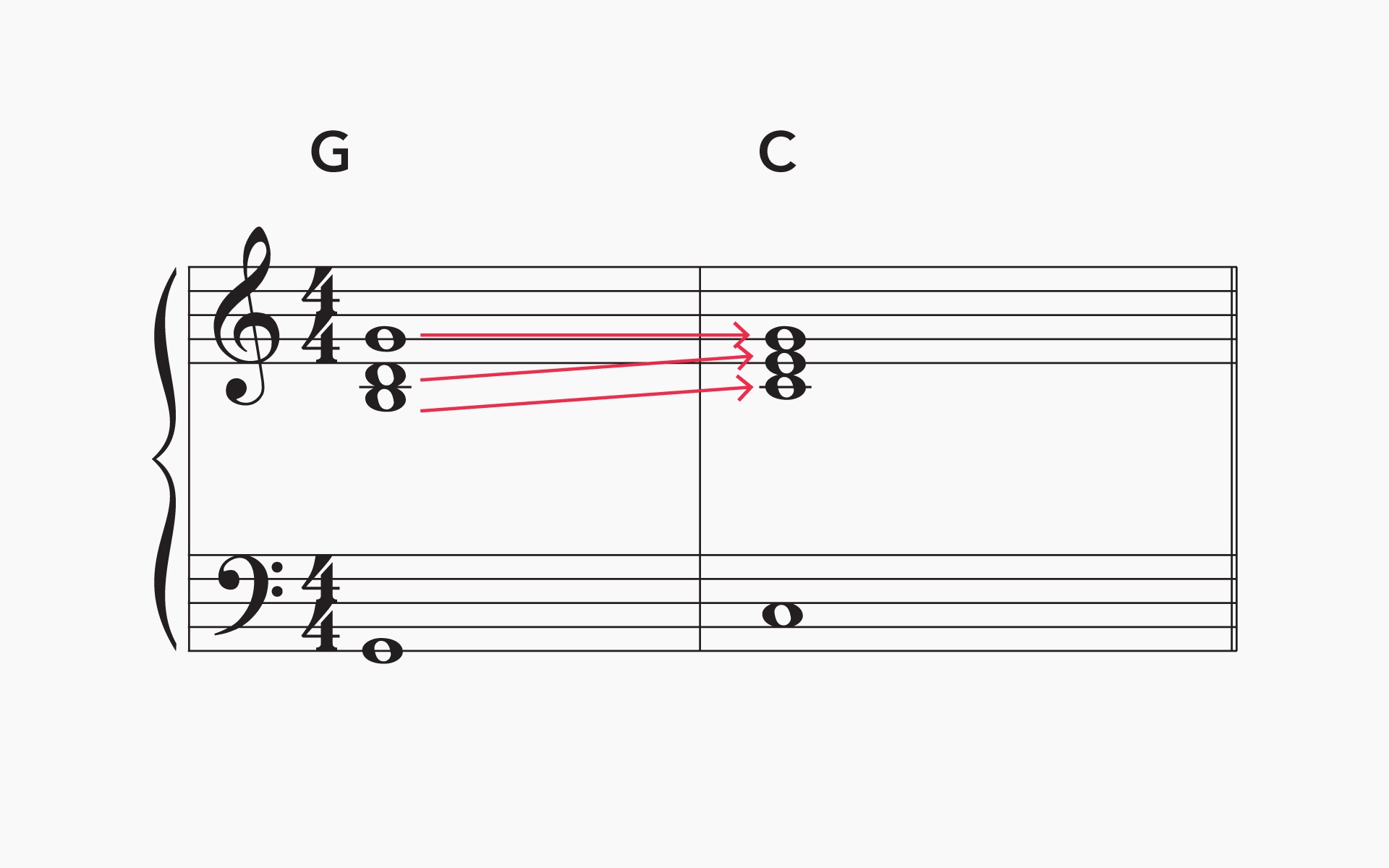Home>Production & Technology>Music Theory>How To Analyze Music Using Music Theory


Music Theory
How To Analyze Music Using Music Theory
Published: January 29, 2024
Learn how to analyze music using music theory. Discover the principles and concepts of music theory to deepen your understanding and appreciation of music.
(Many of the links in this article redirect to a specific reviewed product. Your purchase of these products through affiliate links helps to generate commission for AudioLover.com, at no extra cost. Learn more)
Table of Contents
Introduction
Welcome to the fascinating world of music theory! Music theory is the study of the structure, elements, and principles of music. It provides a framework for understanding and analyzing music, allowing us to delve into the intricacies of melodies, harmonies, rhythms, and forms.
Whether you are a musician, a music student, or just an avid listener, learning how to analyze music using music theory can greatly deepen your appreciation and understanding of the music you encounter. By breaking down the various components of a piece of music, we can uncover hidden patterns, explore the composer’s intentions, and gain insights into the emotional and expressive qualities of the music.
In this article, we will explore the key elements of music theory and how they can be used to analyze music effectively. We will look at melody, harmony, rhythm and meter, and form, and explore how these elements work together to create a cohesive musical piece. Additionally, we will discuss how to apply music theory to analyze and interpret specific songs.
Whether you are interested in classical music, jazz, pop, or any other genre, understanding music theory can elevate your listening experience and help you appreciate the complexity and beauty of the music.
So, let’s embark on this journey together as we unlock the secrets of music theory and learn how to analyze music with a trained ear!
Understanding Music Theory
Before diving into the analysis of music, it is essential to have a basic understanding of music theory. Music theory encompasses a set of principles, concepts, and rules that govern the structure and composition of music. It provides a language and framework for musicians to communicate, analyze, and create music.
At its core, music theory seeks to answer questions about how and why music works. It explores the relationships between notes, scales, chords, rhythms, and other musical elements, unraveling the intricate web of musical concepts and techniques.
One of the fundamental concepts in music theory is the notion of pitch. Pitch refers to the perceived frequency of a sound and is represented by notes on the musical staff. These notes are organized into scales, which are sequences of pitches arranged in ascending or descending order.
Another crucial aspect of music theory is harmony. Harmony involves the study of chords and how they interact with one another. Chords are formed by combining three or more notes played simultaneously, creating a sense of tonal stability or tension. Understanding harmonic progressions and chord functions is essential in analyzing the harmony of a piece.
Rhythm is yet another key component of music theory. It deals with the organization of time in music, including the durations and accents of individual notes and patterns of beats. Studying rhythm helps us understand the pulse, groove, and rhythmic patterns that give a piece of music its character.
In addition to pitch, harmony, and rhythm, music theory also encompasses other elements such as melody, form, dynamics, and texture. Each of these elements contributes to the overall structure and emotional impact of a musical composition.
By studying music theory, we gain a deeper appreciation for the complexity and artistry of musical compositions. It allows us to analyze how different elements work together to create a cohesive whole and enables us to identify recurring patterns, motifs, and techniques employed by composers.
Furthermore, understanding music theory provides a foundation for musicians to compose their music, improvise, and communicate musical ideas effectively. It enhances their ability to interpret and perform music with nuance and expressiveness.
Now that we have a basic understanding of music theory, let’s explore each of its elements in more detail and learn how to analyze them in the context of a musical piece.
The Elements of Music
To effectively analyze music using music theory, it’s essential to have a clear understanding of the key elements that make up a musical composition. These elements include melody, harmony, rhythm and meter, and form.
Melody: Melody refers to a sequence of musical notes played one after another. It is the part of the music that we typically sing or hum along to. A melody can be simple or complex, and it often serves as the main focal point of a musical piece. Analyzing a melody involves examining its contour, pitch range, phrasing, and rhythmic patterns.
Harmony: Harmony involves the study of how individual notes or pitches interact with each other when played simultaneously. Chords are the building blocks of harmony and are formed by combining three or more notes. Harmonic analysis involves identifying and understanding the chords used in a composition, as well as their relationships, progressions, and functions within the piece.
Rhythm and Meter: Rhythm and meter deal with the organization of time in music. Rhythm refers to the arrangement of notes and rests in time, while meter refers to the recurring patterns of strong and weak beats. Analyzing rhythm and meter involves identifying the rhythmic patterns, accents, and syncopations used in a composition. It also includes understanding the meter, such as whether a piece is in 4/4 (common time), 3/4 (waltz time), or other time signatures.
Form: Form refers to the overall structure and organization of a musical composition. It encompasses the arrangement of sections, such as verses, choruses, bridges, and the order in which they appear. Analyzing form involves identifying the various sections of a piece, understanding their relationships, and exploring how they contribute to the overall narrative of the music.
These elements are interconnected and work together to create a cohesive musical piece. Analyzing each of these elements allows us to gain a deeper understanding of the composition’s structure, emotional impact, and artistic choices made by the composer.
By studying these elements, we can identify recurring themes, motifs, and musical devices used throughout a piece. This analysis provides insights into the composer’s intentions and allows us to appreciate the artistry and craftsmanship behind the music.
In the following sections, we will delve deeper into each of these elements and explore specific techniques and approaches to analyzing them in more detail.
Analyzing Melody
When it comes to analyzing music, one of the key elements to focus on is the melody. The melody is the sequence of musical notes that form the main theme or tune of a piece. Analyzing the melody allows us to understand its structure, phrasing, and emotional impact within the composition.
To analyze a melody, start by listening closely to its contour. The contour refers to the shape of the melody as it moves up and down in pitch. Is it ascending or descending? Does it have a smooth or jagged shape? Understanding the contour helps us grasp the overall shape and direction of the melody.
Next, examine the pitch range of the melody. Does it stay within a narrow range or does it span several octaves? A wide pitch range can create a sense of drama and excitement, while a narrow range may convey a more restrained or introspective mood.
Pay attention to the phrasing of the melody as well. Phrases are smaller musical units that make up the melody, similar to sentences in language. Analyzing the phrasing helps us identify the musical “sentences” and understand how they relate to each other. Look for any repeating patterns or motifs within the phrases.
Rhythmic patterns also play a crucial role in melody analysis. Notice the duration of each note and the overall rhythmic feel of the melody. Are there any syncopations or accents that stand out? Analyzing the rhythm helps us understand how the melody interacts with the underlying beat and contributes to the overall groove of the music.
Additionally, consider the emotional impact of the melody. Does it evoke a sense of joy, sadness, excitement, or introspection? The choice of notes, intervals, and the overall contour can greatly influence the emotional quality of a melody.
Lastly, analyze how the melody interacts with other musical elements such as harmony and rhythm. Does it follow or complement the chords being played? Does it align with the underlying rhythmic pattern? Understanding these interactions allows us to appreciate the intricate relationship between melody and other musical elements.
By analyzing the melody, we gain insights into the composer’s creative choices, the development of musical themes, and the emotional expression within a piece. It enhances our ability to interpret and appreciate the nuances and artistry of the music.
Now that we have explored the process of analyzing melody, let’s move on to the next element of music theory: harmony.
Analyzing Harmony
Harmony is a fundamental element of music that involves the study of how different pitches and chords interact with each other. Analyzing harmony allows us to understand the harmonic structure of a piece, uncovering the chords, chord progressions, and their functions within the composition.
To start analyzing harmony, listen closely for the chords being played. Chords are formed by combining three or more notes played simultaneously. Identify the types of chords used, such as major, minor, diminished, or augmented chords. Notice how the chords change and progress throughout the piece.
Next, examine the chord progression, which refers to the sequence of chords used in a composition. Look for any patterns or common progressions, such as the “I-IV-V” progression commonly found in many popular songs. Understanding the chord progression helps us identify the tonality and the overall structure of a piece.
Understanding the function of each chord is also essential in harmonic analysis. Chords can serve a variety of functions, such as tonic, dominant, subdominant, or passing chords. The tonic chord provides a sense of resolution and stability, while the dominant chord creates tension and leads back to the tonic. Analyzing the function of each chord helps us understand how they contribute to the overall tonal and emotional qualities of the piece.
Consider the voice leading within the chords. Voice leading refers to the movement of individual voices or musical lines as they transition from one chord to another. Analyzing the voice leading helps us understand how the individual notes within the chords are connected and how they create smooth and melodic transitions.
Additionally, pay attention to any harmonic techniques or devices used in the composition. This could include modulations, chromaticism, suspensions, or any other harmonic embellishments employed by the composer. These techniques add depth and complexity to the harmonic structure of the music.
Harmony plays a significant role in shaping the emotional and expressive qualities of a musical piece. It provides the foundation for melodies to be crafted and gives the music a sense of direction and purpose. By analyzing the harmony, we gain a deeper understanding of the composer’s creative choices and the interplay between chords, melodies, and overall tonality.
Now that we have explored harmony analysis, let’s move on to the next element of music theory: rhythm and meter.
Analyzing Rhythm and Meter
Rhythm and meter are essential elements of music that deal with the organization of time and the patterns of beats within a composition. Analyzing rhythm and meter allows us to understand the rhythmic structure of a piece, explore its groove, and uncover the underlying patterns that drive the music forward.
Start by listening attentively to the rhythm of the piece. Identify the beats and their durations. Is the rhythm steady and consistent, or does it have variations and syncopations? Pay attention to any accents or emphasized beats that create a sense of rhythm and drive.
Meter refers to the recurring patterns of strong and weak beats in a piece of music. It is represented by the time signature, such as 4/4 or 3/4. Analyze the meter of the composition and how it influences the overall feel and flow of the music. Notice if there are any changes in the meter or irregular meters used throughout the piece.
Look for rhythmic patterns within the piece. Are there any repeating motifs or rhythmic cells that occur throughout the composition? Understanding these patterns helps us identify recurring rhythmic themes and provides a sense of unity and coherence within the music.
Consider the interplay between rhythm and melody. Analyze how the rhythmic patterns interact with the melody to create a sense of groove and forward momentum. Notice if the rhythm supports and enhances the melodic motifs or if it provides a contrasting rhythmic texture.
Pay attention to the dynamics of the rhythm. Does the piece have changes in volume and intensity, or does it maintain a consistent level throughout? Analyzing the dynamics helps us understand how the rhythm contributes to the overall expression and emotional impact of the music.
Syncopation is another important aspect of rhythm. It refers to the deliberate displacement of accents or stresses within a musical phrase. Analyze if there are any syncopated rhythms used in the composition and how they add an element of surprise or tension to the music.
Rhythm and meter provide the backbone of a musical composition. They give it structure, drive, and a sense of time. By analyzing rhythm and meter, we gain insights into the pulsating heartbeat of the music and how it shapes our perception and experience as listeners.
Now that we have explored rhythm and meter analysis, let’s move on to the next element of music theory: form.
Analyzing Form
Form is a crucial aspect of music that deals with the overall structure and organization of a composition. Analyzing form allows us to understand how the different sections of a piece relate to one another and contribute to the overall narrative and aesthetic of the music.
Start by identifying the different sections within the composition. Look for recurring patterns, such as verses, choruses, or instrumental interludes. Pay attention to any contrasting sections, such as bridges or pre-choruses, that provide a sense of variety and tension.
Notice the order in which these sections appear and whether they repeat or develop throughout the piece. This will help you identify the specific form or structure used in the composition, such as AABA, ABAB, or verse-chorus-bridge.
Consider the transitions between sections. Analyze how the music moves from one section to another and whether there are any musical devices or techniques used to create smooth or dramatic transitions. Notice if there are any recurring motifs or themes that connect different sections of the piece.
Pay attention to any changes in dynamics, tempo, or instrumentation that occur within the different sections. These changes can provide additional clues to the form and help you understand how the composer intended to structure the composition.
Furthermore, consider the overall narrative or emotional arc of the music. Analyze if the form of the piece helps convey a story or evoke specific emotions. Look for any musical climaxes, resolutions, or moments of tension and release that contribute to the narrative arc.
Understanding the form of a composition allows us to perceive the larger picture and appreciate how the individual sections work together to create a cohesive whole. It provides a sense of organization and coherence and enables us to interpret and appreciate the creative choices made by the composer.
In the next section, we will discuss how to apply music theory to analyze and interpret specific songs, putting our knowledge into practice.
Applying Music Theory to Song Analysis
Now that we have learned about the key elements of music theory and how to analyze them individually, let’s explore how we can apply this knowledge to analyze and interpret specific songs. By analyzing songs using music theory, we can uncover hidden layers of meaning, understand the compositional techniques employed, and gain deeper insights into the musical choices made by the artists.
Start by selecting a song that intrigues you. Listen to the song attentively, focusing on the melody, harmony, rhythm, and form. Consider the lyrics and how they interact with the music. Pay attention to the emotions and moods that the song evokes.
Begin the analysis by examining the melody. Look for recurring motifs, the shape of the melody, and any notable variations. Analyze the pitch range, phrasing, and overall contour of the melody. Consider how the melody relates to the lyrics and the emotional impact it creates.
Next, analyze the harmony of the song. Identify the chords used and the chord progressions. Examine the key and any modulations or key changes that occur. Consider how the harmony supports and enhances the emotional content of the song.
Analyze the rhythm and meter of the song. Pay attention to the groove, accents, and any syncopated rhythms used. Notice any rhythmic motifs or patterns that appear throughout the song. Consider how the rhythm contributes to the overall feel and energy of the music.
Examine the form of the song. Identify the different sections, such as verses, choruses, bridges, and any pre-choruses or interludes. Analyze how these sections relate to each other and contribute to the overall structure and flow of the song. Notice any dynamic or tempo changes that occur within the sections.
When analyzing a song, it is also valuable to consider its cultural and historical context. Explore the artist’s background, the genre of the song, and any influences that might have shaped its composition. This knowledge can provide further insights into the artistic intention and social significance of the music.
Applying music theory to analyze songs allows us to appreciate the thoughtfulness and craftsmanship behind the music. It allows us to go beyond surface-level enjoyment and understand the deeper layers of musical expression and creativity within the song.
Remember, the analysis of a song is subjective and open to interpretation. The goal is to uncover insights that enhance our understanding and appreciation of the music. Enjoy the process of analyzing songs, and let the magic of music theory guide you in your exploration.
Conclusion
Music theory offers a fascinating and comprehensive framework for analyzing and understanding music on a deeper level. By examining the elements of melody, harmony, rhythm and meter, and form, we can unlock the secrets and intricacies of a musical composition.
Through the process of music analysis, we gain insights into the composer’s creative choices, the emotional impact of the music, and the interplay between different musical elements. We learn to appreciate the structure, complexity, and artistry behind the music we listen to.
Understanding music theory allows us to explore the contours of melody, dissect the relationships of chords, tap into the rhythmic pulse, and unravel the narrative arc of a musical piece. It provides a language and set of tools to communicate, analyze, and interpret music with a trained ear.
Whether you are a musician, a music student, or simply a passionate listener, learning how to analyze music using music theory can elevate your appreciation and enjoyment of the music you encounter. It deepens your connection to the music, enhances your listening experience, and enables you to communicate your musical insights with others.
Remember, music theory analysis is not a rigid set of rules, but rather a guidepost to help us better understand and appreciate the complexities of music. It offers a framework, but also leaves room for personal interpretation and subjective experiences.
So, as you embark on your journey of music theory analysis, embrace the magic and beauty of music. Dive into the intricate melodies, harmonies, rhythms, and forms that make up the music we love. Allow music theory to illuminate your path, enabling you to unravel the hidden layers of meaning and connect with the profound expression of human emotion that music embodies.
May your ongoing exploration of music theory enrich your musical journey and open new dimensions of understanding and appreciation.











